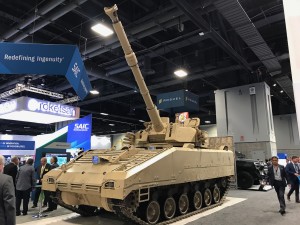
SAIC [SAIC] will not compete for the Army’s Optionally Manned Fighting Vehicle program as a prime contractor, but will look to continue pursuing vehicle systems integration opportunities such as its offering with Polaris [PII] for the Infantry Squad Vehicle (ISV) effort, a top company official told Defense Daily. Jim Scanlon, executive vice president of SAIC’s defense systems group, pointed to the significant investment required upfront for the OMFV bid sample process and said the company has focused on developing a…

 By
By 











